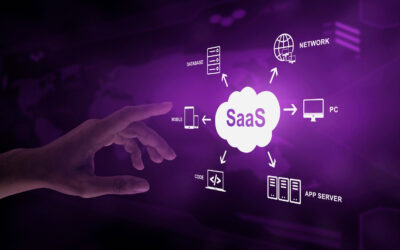The creation of Linux device drivers is a highly demanded service provided by numerous IT companies. What is Linux? What are the functions of drivers in Linux-based solutions? How to develop these drivers? Find the answers in our article.
About Linux
Linux is a modern, free operating system based on UNIX standards and traditions. The history of Linux dates back to 1983 when Richard Stallman started the GNU project and in 1985 founded the non-profit Free Software Foundation. The main goal was to develop a UNIX-like system that would consist only of free software.
Linux was first developed under the name Freax as a small but self-contained OS kernel in 1991 by Linus Torvalds, with the main goal of being compatible with UNIX. Actually, there were two unworkable prototypes. But Torvalds continued his hard work on the development of a working version of the Linux OS. And in 1994, the first stable and workable version were released. Inside it contained the kernel and a small amount of maintenance software developed by the same team that created the kernel itself. It was a rather meager set of tools, but it began the era of Linux systems.
The main principle of this OS was the support of open source code, which allowed Linux systems to develop and grow to the current state.
Many people understand Linux as a full-fledged operating system that can be installed and used immediately, but in fact, Linux is just a kernel. The rest of its software is the result of the work of thousands of programmers. And what we now understand by the Linux operating system is a symbiosis of the Linux kernel and third-party software.
Systems that use the Linux kernel are known as Linux distributions. These are Ubuntu, CentOS, and Linux Mint, to name a few. They are fully-featured operating systems, like Windows or macOS, but a distinctive feature of Linux distributions is the open-source code. This means that virtually any user can make their own adjustments there and develop an individual operating system or edit the old one for their own needs. It should be noted that there are also paid Linux distros.
Linux was designed to be used on various hardware platforms, including servers and mobile devices. Today, the system provides the basis for numerous embedded projects across various industries and continuous active development thanks to the interaction and contributions of Linux community members from around the world.
Linux architecture
The architecture of Linux systems consists of only four main elements.
- Hardware. These are the hardware characteristics of the device running Linux: video card, audio card, processor, cores, etc.
- Kernel. This is the main component of Linux systems. In fact, this is a bridge that connects the low-level hardware and high-level components of the operating system. It distributes system resources between running programs and all running processes. Kernel is always the first to be loaded into the system and is constantly in working condition.
- Shell. This is the user interface that establishes consistency between the user and the operating system kernel. This is also a bridge, but a more advanced one, as it was created for a person so that he/she can influence the operation of the Linux system.
- Utilities. These are pieces of software that users can install to the system in order to expand functionality and meet their business requirements.
Linux device drivers
Linux driver development is a separate service offered by software providers, which proves the significance of drivers for embedded systems. Let’s figure out the essence of device drivers.
Any embedded system consists of:
- a hardware part, which includes a microprocessor or microcontroller and peripheral devices
- a software part, which is built into the microprocessor/microcontroller.
So, if you connect peripheral devices (monitors, printers, cameras, etc.) to such a system, they should somehow communicate with the software part to perform their functions. That’s what drivers are needed for. Drivers ensure the interaction of peripheral devices with an operating system and pieces of hardware, for example, to connect the graphics card with the printer. Hence, they are named device drivers.
In its essence, a driver is a piece of software containing functions written in the C language. A driver can be written for one particular device or a group of similar devices, e.g., for printers produced by Samsung.
A driver contains obligatory functions, for example initializing the driver, reading data from the device, or performing its configuration operations, as well as it may have optional functions for apps with specific requirements.
Key features of drivers
- I/O management
- Error management
- Device management
- Speed optimization
- Parallel handling of several processes
Types of drivers
- Character drivers are created for character devices, such as serial ports, sound cards or line printers. In these devices, the input/output is performed character by character, since they don’t have a place for data storage. Hence, character drivers also transmit data from hardware to users and back character by character or in a byte stream.
- Block drivers are created for block devices, represented by hard disks or USB cameras. They store data in a buffer and transmit it in blocks.
- Terminal drivers are created for devices that users directly interact with, including computers, phones, fax machines, etc.
- Streams are created to transmit fast data flows, like network drivers.
How to write a Linux driver
The development process of drivers includes four main steps:
- Programming the source files of a driver (select a name, implement I/O functions)
- Integrating the new driver into the kernel
- Configuring the updated kernel
- Testing the new driver
To perform these steps, you should have a good command of the C programming language, have a clear understanding of input/output processes, and be familiar with app development for UNIX systems.
Reasons to write device drivers
You need to write your own device driver if:
- the device manufacturer doesn’t provide drivers for your operating system
- you want to extend the functionality of your device
- you face the concurrency issue
- you want to increase the efficiency of CPU by using hardware interrupts.
Summing up
The architecture of Linux is so simple and efficient that it can be integrated into various devices: PCs, smartphones, servers, IoT systems, and more. Device drivers add value to their functionality and simplify various management processes.
Linux was not intended as an alternative to Windows or macOS. Its development was a desire to make an accessible and efficient operating system. But the result exceeded expectations, and the entire ecosystem of Linux products appeared.










0 Comments